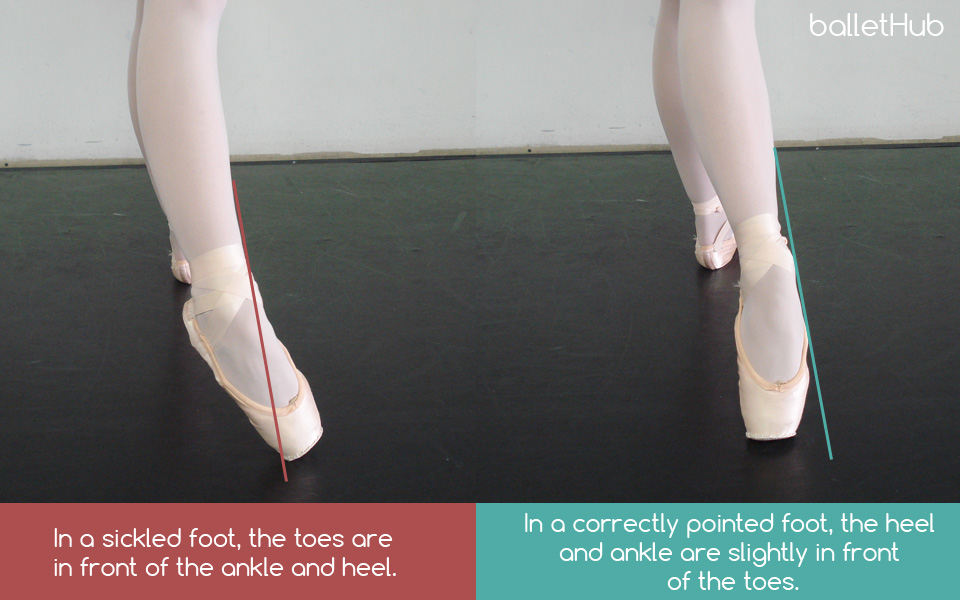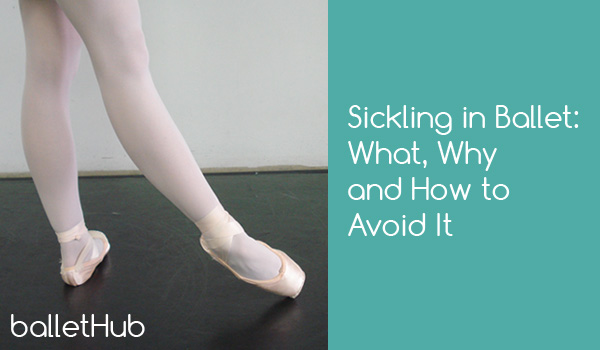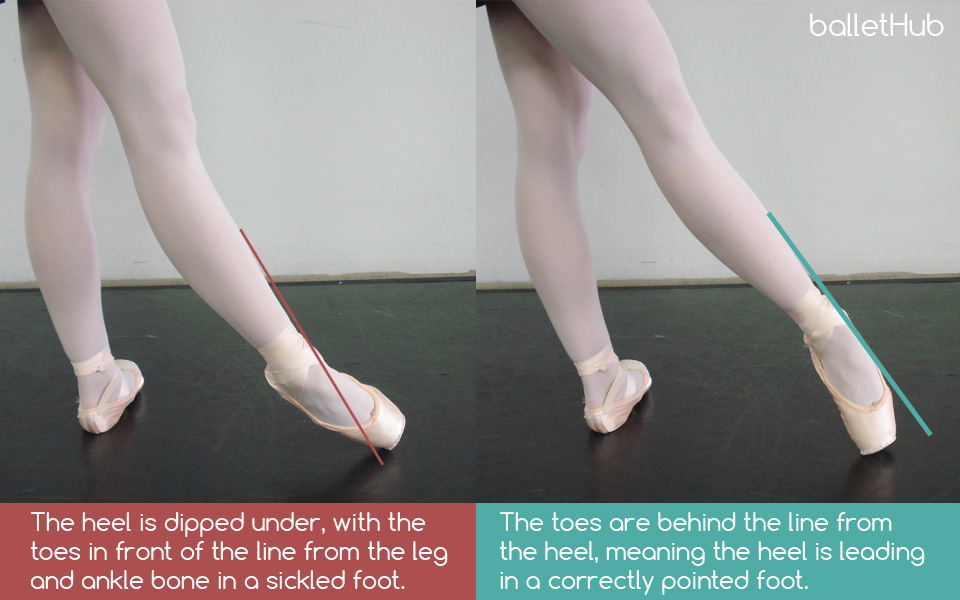When most people hear the word “sickle” they likely think of a useful tool for harvesting grain. While there may be a sickle appearing in a classical ballet or two (La Fille Mal Gardee, for example), when it comes to a dancer’s technique, they should always try to avoid it as it’s considered a mistake.
Sickling, as used in ballet and other dance forms, refers to when a dancer’s foot is misshaped in such a way that it actually is scooped down with the heel too far back. Of course, that description somewhat depends on the position and how you see it, but after this post you’ll have a clear understanding of what it means “to sickle your foot”, what a correctly pointed foot looks like, and why it’s important not to sickle.
Exercises with a large therapy band where you concentrate on keeping your heel forward as you point your foot are great ways increase the strength in your foot and ankle.
While it has it’s own term, it’s not a desired quality for a dancer for multiple reasons: it does not enhance your line nor is it functional.
A dancer who always sickles will likely develop incorrect muscles over time and struggle with weakness in the ankles, which as you can imagine can limit an overall ability to perform more advanced steps.
So What Exactly is Sickling?
Let’s take a look at a few pictures and you’ll see exactly what “sickling your foot” looks like.
 Here, in tendu side, we see a sickled foot on the left and a correctly pointed foot on the right. Notice how the toes are well in front of the line that her calf is making, while the correct picture has them slightly behind the inside of her ankle.
Here, in tendu side, we see a sickled foot on the left and a correctly pointed foot on the right. Notice how the toes are well in front of the line that her calf is making, while the correct picture has them slightly behind the inside of her ankle.
Now, demonstrating tendu to the front, notice how the foot is dipped under with the heel close to the ground, while the correct photo on the right shows once again that the toes are behind the inside of her ankle.
Finally, in tendu to the back, the sickled foot practically has its toes pointing straight into the floor with the heel sticking up in the back. On the correct picture, the toes are once again behind the line from the inside of the ankle.
Even though you just saw three different positions, try to look at how the shape of the foot actually doesn’t change, the only difference is where the leg is. A foot can be sickled at any time, in any position when it’s pointed, not just in tendu.
How to Correctly Point Your Feet
As mentioned and demonstrated several times above, the basic idea of pointing your foot is actually not perfectly straight, but with the heel slightly forward and the toes slightly behind the inside of your ankle bone.
Go ahead and try it out sitting down.
- First, point your foot so it looks like a straight line out from your calf.
- Now shift your foot to the outside just half an inch.
- Your big toe should now be just inside of an imaginary line from your ankle bone, just about a toe width pointing out.
If you feel you lose too much of your point by moving your foot slightly out, then just be sure your foot is still straight out from your calf. Exercises with a large therapy band where you concentrate on keeping your heel forward as you point your foot are great ways increase the strength in your foot and ankle.
Less Sickle, Better Line with More Function
One of the main reasons a dancer would not want to sickle their foot is because it is breaking her or his line. Look at how a correctly pointed foot continues the rounded shape more beautifully and looks more strong than a sickled foot. Another major reason is that a properly pointed foot allows the dancer to have more functional technique. Think about which might be stronger to balance on… It’s definitely not a sickled foot.
After years of training correctly, the muscles in your foot will also adapt and become stronger, making many more advanced steps quite a bit easier because you can transfer your strength from your legs and feet into the floor with more power and stability.
Especially for females, sickling can lead to many potential problems if wanting to eventually dance on pointe. A sickled foot in a pointe shoe has a very high chance of rolling over and causing injury when going up on pointe.
You May Not Realize It!
Sickling is sometimes tricky to self correct. In beginners, it most commonly happens because, well, you’re a beginner and there’s already so many things to think about! After a while it can become easier, but always try to remind yourself about the shape of your foot.
For professional dancers, a sickled foot can sometimes be seen when they are trying to point their foot “harder.” Since most feet are more naturally flexible going inwards, the foot starts to veer inwards and sickles. Even at professional levels, a dancer will often still be thinking of the line of their feet in order to avoid sickling.



